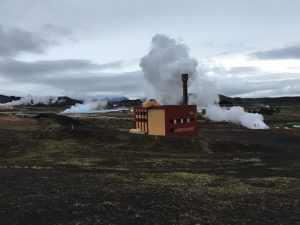Greenhouse gas emission reductions, cost, and reliability are the drivers
Regulatory officials in California are raising the bar on integrated resource planning, taking it to a more efficient and effective level.
The California Public Utilities Commission (CPUC), together with the California Energy Commission (CEC), is guiding a process that helps each load-serving entity (LSE) collectively meet statewide energy, social, and environmental goals.
 CPUC staff have issued a proposal for implementing integrated resource planning across the state. This proposal, created with input from the LSEs, outlines a structured process for LSEs to develop IRPs and for the CPUC to review these IRPs. The CEC has also drafted IRP submission and review guidelines specifically for publicly owned utilities. These proposals must first by adopted by the Commissioners before taking effect.
CPUC staff have issued a proposal for implementing integrated resource planning across the state. This proposal, created with input from the LSEs, outlines a structured process for LSEs to develop IRPs and for the CPUC to review these IRPs. The CEC has also drafted IRP submission and review guidelines specifically for publicly owned utilities. These proposals must first by adopted by the Commissioners before taking effect.
How is the California IRP process different? From its very foundation, the IRP process being developed in California lays a stronger foundation than those employed by virtually any other state. Here are eight such building blocks:
- The IRP process uses greenhouse gas (GHG) emission reductions, cost, and reliability as drivers for deriving the amount of renewable energy in the resultant generation mix.
- Plans are resolved to optimize the attainment of state policy goals, in addition to those of individual LSEs.
- The CPUC is developing base plans, inputs, and assumptions that LSEs must use to develop their IRPs.
- The planning process is being guided by several guiding principles that were created by the CPUC with input from the LSEs.
- The minimization of air pollutants affected by the resultant IRPs must show early priority on disadvantaged communities across the state.
- Resultant IRPs must identify an optimal mix of supply-side and demand-side resources for achieving GHG targets.
- The process is being created in coordination with several state agencies.
The ultimate goal is “to identify optimal solutions that might not otherwise be found, and to guide resource investment decisions across all types of LSEs and resource programs.”
Senate Bill 350, the Clean Energy and Pollution Reduction Act of 2015, establishes new clean energy, clean air, and GHG reduction goals for 2030. The bill also introduces IRP planning as a statewide initiative. (Before SB 350, California did not require IRPs.)
Essentially, SB 350 requires resource planning to be based on attaining clean energy and clear air goals—a clear distinction from resource planning is most other states.SB 350 sets several targets for integrated resource planning to attain:
- Raises the RPS target from 33% to 50% by the end of 2030 (with interim targets for 2020, 2024 and 2027). The RPS must be attained through renewable energy procurement.
- Doubles energy efficiency (to 50%) by 2030 for buildings and retail end-uses.
- Sets emission targets for the electricity sector and LSEs for achieving the state’s 2030 GHG goal.
- Requires all LSEs to develop and file IRPs with the CPUC. These LSEs include all independently owned utilities (IOUs), community choice aggregators (CCAs), electric service providers (ESPs), and electricity cooperatives. Publicly owned utilities (POUs) whose three-year average of electricity demand exceeds 700 gigawatt hours must file IRPs with the CEC.
- Designates the CEC to set and monitor the IRP process for the POUs, and the CPUC to set and monitor the process for all LSEs.
Both the CEC and CPUC, through a number of workshops, solicited input from their respective LSEs into the IRP process. Both Commissions have published proposals that outline, in detail, the requirements for developing and creating the IRPs.
Some perspective, please. California reaching its 50% RPS goal in about thirteen years will have an enormous, worldwide effect on global warming. Why? Because California is the world’s sixth largest economy, behind only the United States (of course), China, Japan, Germany, and the United Kingdom; and just ahead of France, India, Italy, and Brazil.
That 50% RPS goal is certainly doable; the state currently attains a 26% RPS. In addition, Senate Bill 100, which sets an RPS goal of 100% by 2045, is currently making its way through the California legislature. The bill passed a Senate vote in May 2017, and could become law before 2017 ends. The bill passed a Senate vote in May 2017, and could become law before 2017 ends. Its passage would only serve to increase the state’s effect on global warming.
Next. Our next position paper will continue discussing the California IRP process: guiding principles, disadvantaged communities, plan categories, and a reference system plan.
—Rich Maggiani